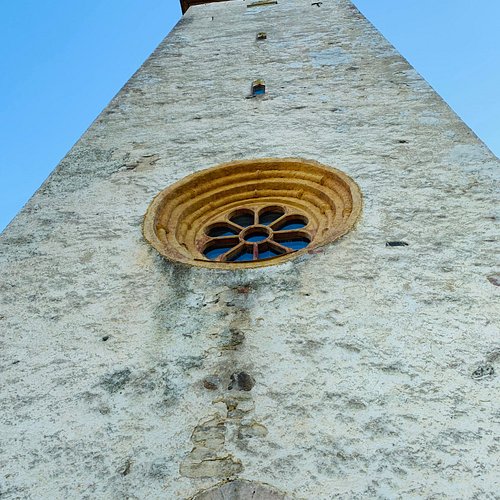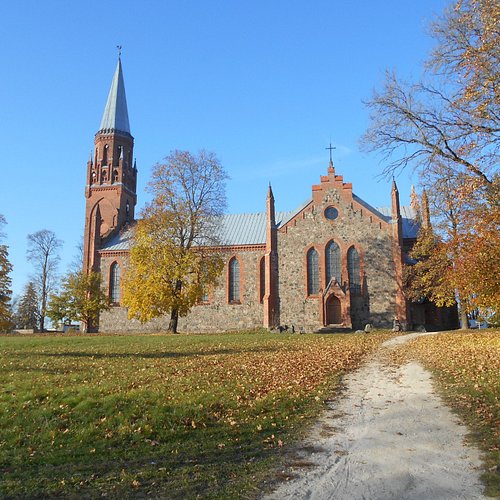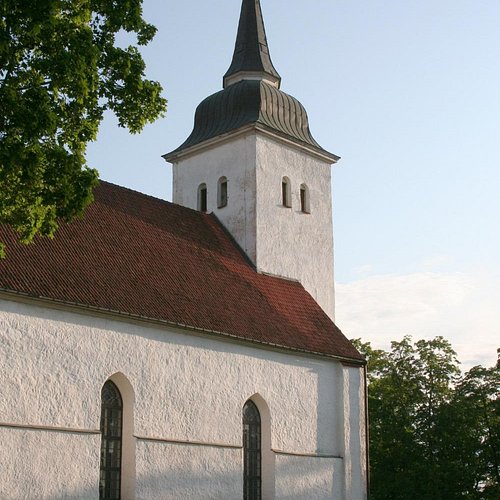Top 10 Churches & Cathedrals in Viljandi County, Viljandi County
Discover the best top things to do in Viljandi County, Estonia including St. Peter's Church, Pilistvere Church, St. John the Baptist's Lutheran Church, Halliste Holy Anna Church, Viljandi Pauluse Kirik, St. John's Church, Mensenkampff Chapel, Tarvastu Peetri Kirik, Kopu Peetri Kirik, Karula Maarja Church.
Restaurants in Viljandi County
1. St. Peter's Church
Overall Ratings
5.0 based on 2 reviews
Church is peculiar thanks to its slanting tower that due to bad soil has inclined one meter to the west.In the middle ages Karksi church life was connected with the castle. In the castle built in 13th century there was also a chapel dedicated to apostle Peter. Present stone church was built in 1773-1778 using partly the foundation walls of the castle. The architecture of the church is extremely simple, a tower with baroque style broach is connected to the church hall, on the east side the sacristy was added.
2. Pilistvere Church
Overall Ratings
5.0 based on 2 reviews
The stone church was built in the second half of the 13th century. It was constructed on the example of Suure-Jaani and other Jarvamaa churches. Pilistvere church resembles these by the arched choir area, nave and the tower. The church was destroyed several times during 17th to 18th century. It was reconstructed in 1762 which is also stated in the eastern wall of the church. The tower built in 1856 was destroyed in 1905 and reconstructed in 1990. Good to know: -The local priest was mentioned already in 1234. -Pilistvere church has the highest tower of all Estonian rural churches
3. St. John the Baptist's Lutheran Church
Overall Ratings
5.0 based on 1 reviews
The Suure-Jaani parish stretches over the area which at the end of Estonian Antiquity had Lembitu’s stronghold in Lohavere as its centre. Lembitu was a famous leader of an ancient Estonian county during the Ancient War of Independence.The church built in the middle of the 13th century consisted of the choir, the three-part nave and the steeple, possibly the first steeple in Estonia. The church got its present appearance from 1869 to 1872. Today, only few medieval details can be seen. Interesting to know:In the room under the steeple, there is a cross from the graveyard with the name Anne Ratecep and the year 1598 written on it. According to the legend, Anne washed and clothed the ones who had died of plague during the Livonian War. For that, the people dedicated a cross to her.
4. Halliste Holy Anna Church
Overall Ratings
5.0 based on 1 reviews
The Halliste Lutheran Church is one of the most beautiful and interesting churches in Estonia. The Halliste Church, which was seriously damaged in the course of various wars, acquired its present appearance in 1991 with the help of local initiative. When visiting the church, make sure to look at the altar painting entitled Christ by Estonian artist Juri Arrak and enjoy one of the frequent concerts.Interesting facts: - The church has an unusual black ceiling.- After a fire in 1959, the church stood in ruins for 30 years.- The oldest parts of the current stone church dates from the 15th century.- The Halliste Church is the home church of Estonian President Toomas Hendrik Ilves.
5. Viljandi Pauluse Kirik
Overall Ratings
4.5 based on 8 reviews
When the town of Viljandi started to grow in the middle of the 19th century the only church in town became too small for the people. The Viljandi estate owner baron Ungern-Stenberg gave the community a part of his estate as building ground for the church.Interesting to know:· The architect of the sanctuary that was consecrated in 1866 was Matthias von Holst.· During the construction of the building so called Tudor Gothic elements were used as they were fashionable at that time. · The author of the altar painting "Christ on the Cross" is Karl Christian Andreae.· Since 1866 a G. Knauf organ fills the church with music, the biggest still functional organ of its kind in Estonia.
6. St. John's Church
Overall Ratings
4.0 based on 25 reviews
The church devoted to John the Baptist was erected in the 17thC upon the ruins of a Franciscan abbey. The church was destroyed several times in various wars and then invariably rebuilt. Still functioning after the Second World War, it was closed in 1950 and turned into a warehouse.It was consecrated again in 1992 and is now often used as a concert venue. Interesting to know:*This place of worship contains the communion table by Aivar Oja and stained-glass windows by Renee Aua.*Wall carpets have been made by the local textile artist Prof. Anu Raud, whose work "Mother Tree” is displayed in the UN's main building in New York.
7. Mensenkampff Chapel
Overall Ratings
4.0 based on 1 reviews
Situated close to the Tarvastu Order Stronghold is a chapel constructed in the early 19th century in Classicist style. What makes the building unique is its high, pyramid-like roof and porticos on all four sides resting on pairs of columns. Did you know…?*The mausoleum was ordered to be built by the local lady of the manor in memory of her husband. *In order to provide better access to the chapel, a suspension bridge was constructed across the river valley in 1878. This bridge was later gifted to the City of Viljandi and is currently in use in the centre of the city in the hilly area close to the castle ruins.
8. Tarvastu Peetri Kirik
The oldest elements of the church in Tarvastu date back to the 14th century. The former church consisted of a square-shaped nave and a choir.The church has suffered in numerous wars and in 1771 it received a new appearance under the supervision of Johann Christoph Knaut. The church caught fire after a stroke of lightning in 1892 and its reconstruction was started in 1893, in December of the very same year the consecration of the reconstructed church took place.Interesting to know:· The designer and builder was a school teacher from Poltsamaa - Gustav Heinrich Beermann.· The author of the altar painting “Golgatha” is Theodor Thieme. Organ builder August Terkmann.
9. Kopu Peetri Kirik
The small neo-classical church with its strong tower was built in the years 1821-1825. The iconostasis of the church hall is embellished with antique shape pilasters and entablature.Interesting to know:·The plot of the altar painting "Let the children come to me" by an unknown artist is unique.·The epitaphs of the von Stryk family, the family of the patron of the church, were preserved.
10. Karula Maarja Church
Karula Church has been working in the converted manor granary since 1997. The most special feature of the church is the stained glass painting 'Eucharist' of Estonian artist Dolores Hoffmann which depicts local people as the disciples against the background of the holly landscape of Karula.The doors of the Karula Church are open to visitors during Sunday services. Please contact a representative of the congregation if you wish to visit the church some other time.Interesting facts:• The same building was used as an animal barn during the Soviet times.• The stained glass painting was donated to Karula Church by the descendants of the German squires the von Grotes.







